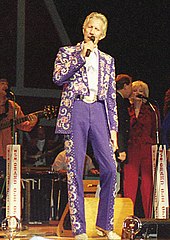How Clarence White's B-Bending Telecaster Bridged Country and Rock
The legendary Byrds guitarist and bandmate Gene Parsons opened up a new world of guitar playing with their invention.
By Mike Duffy and Jeff Owens
Even before Clarence White joined the Byrds in the late 1960s, he was already a revered guitarist.
As a teenager, he was a flatpicking bluegrass pioneer as a member of the Country Boys—later known as the Kentucky Colonels—with his brothers, Eric and Roland. Their 1964 album, Appalachain Swing!, is still revered to this day.
But when he switched to the electric guitar, White’s legend only grew, as his mastery of the groundbreaking StringBender invention attached to his legendary 1954 two-tone Sunburst Telecaster opened a unique style of playing adopted by several of country and rock’s heaviest hitters.
Famously, White was the first to employ this contraption. As the story goes, White was looking for a way to play steel-pedal licks on his Tele while playing in a band called Nashville West in 1967. To achieve this, White would bend the note behind the nut, but that proved to be unnecessarily challenging.
White’s bandmate and collaborator, multi-instrumentalist Gene Parsons, also had experience working on guitars and banjos, and together, they devised what would come to be known as the Parsons/White Pull-String (which was eventually renamed the StringBender and later the B-Bender).
Parsons’ thought was to use the shoulder strap to bend the note by utilizing spring-loaded levers inside the guitar’s body, which connects the bridge to the strap button on the upper bout.
The strap button itself was attached to a lever that moves up and down about an inch. When you wear the guitar over your shoulder and push down on the neck, the pressure pulls the strap button upward, activating the lever system and raising the pitch of the B string by a whole tone (up to a C#).
Now came the hard part: bringing the StringBender to life. White didn’t want to route out his Tele, so Parsons actually mounted it on the back of the guitar. A wooden rim mirroring the shape of a Telecaster was added to the back, as well, and it was all covered by a piece of Masonite, effectively doubling the size thickness of the guitar.
With that game-changing alteration made, those steel-like bends were more easily achieved, opening a bridge between country and rock. White's talents with the new contraption are all over the Byrds' "You Ain't Going Nowhere", "Buckaroo" and "Lover of the Bayou," in addition to his work on the Everly Brothers' "I'm on My Way Home Again", Joe Cocker's "Dear Landlord" and Arlo Guthrie's "Coming Into Los Angeles".
The StringBender was hardly the only modification for this iconic guitar, however. After recording the Byrds' Ballad of Easy Rider, the neck pickup was swapped for a Stratocaster pickup. White also added two banjo tuners to the high E and A strings to allow for quick tune changes.
Aesthetically, the guitar had several pickguards throughout its lifetime, from black to dark pearloid to its current red-brown tortoise look. And you can’t help but notice the stickers—one of the Frankfurt city crest from when the Byrds played in Germany; one of Nudie Cohn, the famous tailor who made the stage suits for the Byrds; and the logo of a Plymouth Satellite—that make White’s Tele instantly recognizable.
White tragically died in 1973 when he was struck by a drunk driver while loading gear into his car, but the original StringBender Tele is in capable hands, as country legend Marty Stuart bought it from the family.
“Roland White got me my first job with Lester Flatt in Nashville when I was 13, so the Whites were like family, even though I only met Clarence once,” Stuart said. “After he was killed, his wife, Susie, moved back to Tennessee and was looking to sell some of Clarence’s Nudie suits and guitars. I was interested in a ’54 Strat, but she said, ‘You really want to see the Tele, don’t you?’”
In a matter of minutes, Stuart couldn’t believe he was holding the ’54 Telecaster that had contributed so much to country music.
“I had just gotten a job with Johnny Cash, so I was making a little bit of money. I laid a check down on the table and asked Susie to write down the number she wanted for both guitars and some suits. I said, ‘If I don’t have it, I’ll run to the bank and get it.’ But she just wrote down $1,450. I said, ‘Susie, the E string is worth more than that!’”
Indeed, for $1,450, Stuart walked away with a collection of Byrds memorabilia, some Nudie suits and the Strat and that one-of-a-kind Tele, which he continues to play today.
Link
